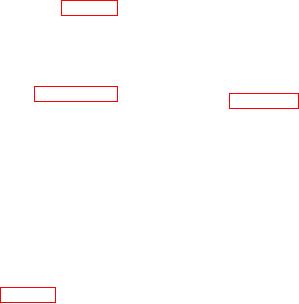
main switchboard. The tripping relays complete the
configuration status logic can identify any split-plant
power circuits to the trip coils on selected main
configuration by monitoring the open and close status
switchboard circuit breakers. The coils open the circuit
of the generator and bus tie breakers.
breakers to remove load from the line. Additionally,
STANDARD PARALLEL-PLANT CONFIGU-
other loads are similarly inhibited in load center
RATION.-- In standard parallel-plant operations, two
switchboards as tripping relays are actuated by their load
generators are on line and paralleled. Additionally, all
shedding control relays.
bus tie breakers are closed so that the three main
switchboards are connected in a loop system.
Configuration status logic at the EPCC identifies the
TOPS
on-line generators for auto recovery logic. (See fig. 3-4,
view B.)
The TOPS is an automatic protection system
NONSTANDARD PLANT CONFIGURA-
designed to prevent the loss of a GTGS because of
TIONS.-- The open-loop paralleled generator
overtemperature. An example of the TOPS control panel
configuration, as shown in view C of figure 3-4,
is shown in figure 3-5. This panel receives analog inputs,
energizes all three switchboards with two generators.
such as GTGS inlet temperature, rpm, kilowatt, and so
These configurations are either operator selected or the
forth. These signals originate from the PAMISE. The
result of a failure. All electrical distribution functions
control panel also receives digital inputs from the
have these configurations, but automatic recovery
EPCC. These signals are generator breaker status, bus
capability is not available.
tie breaker status, and shore power status. The control
panel processes the signals and provides a listing to the
EMERGENCY CONFIGURATIONS.-- Normal
display unit. Based upon the results of the analysis of
plant operation requires two generators to be either in
the data, the control panel issues the commands to close
the parallel or split-plant configuration. In an emergency
the bleed air valves and/or initiate load shed. The TOPS
with two generators inoperative, one generator must
control panel will take whatever action is needed to
energize the three switchboards. (See fig. 3-4, view D.)
maintain the vital electrical load.
Overpower protection will cause load shedding of
preselected nonvital and semivital loads. If automatic
load shedding does not reduce the load sufficiently,
400-Hz Power System
additional loads will have to be removed manually.
Load shedding
The EPCC on the CG-47 class ships can remotely
operate a total of six 60/400-Hz static converters. Only
four converters, however, are used on CG-47 class ships.
Load shedding is a process by which loads are
removed from the electrical bus to prevent overloading
On the DD-963 and DDG-993 class ships, the
of the on-line generators. Load shedding can be
60/400-Hz converters cannot be controlled from the
EPCC. The three converter units on these classes of
accomplished manually or automatically. On the CG-47
class ships, load shedding is completely independent of
ships each provide a shutdown signal, a summary
temperature high signal, and a power available signal to
the TOPS.
the EPCC.
At the EPCC, the operator can engage manual load
shedding by depressing the LOAD SHED push-button
On the CG-47 class ships, operators at the EPCC
indicator. This switch transfers +28 volt dc power to a
can control the converters only when the CCS IN
load shed relay.
CONTROL indicator is illuminated. Starting as well as
paralleling and stopping of the 60/400-Hz converters is
The operator can start automatic load shedding by
possible from the EPCC. Control and monitoring of
using any overpower sensor circuit in one of the
each static converter is provided by the following
switchboards. The sensor circuit energizes a
controls and indicator lights:
self-contained relay whose contacts are in parallel with
the LOAD SHED ACTIVATED push button at the
1. 60-HERTZ POWER AVAILABLE - Ship's
EPCC. Closing these contacts energizes the same load
power is available at the converter input breaker.
shedding control relay as in manual load shedding.
2. 400-HERTZ POWER AVAILABLE - The
When the operator energizes the load shedding
converter is running. Closing of the converter
output breaker is enabled.
control relay, its contacts pickup tripping relays in each

